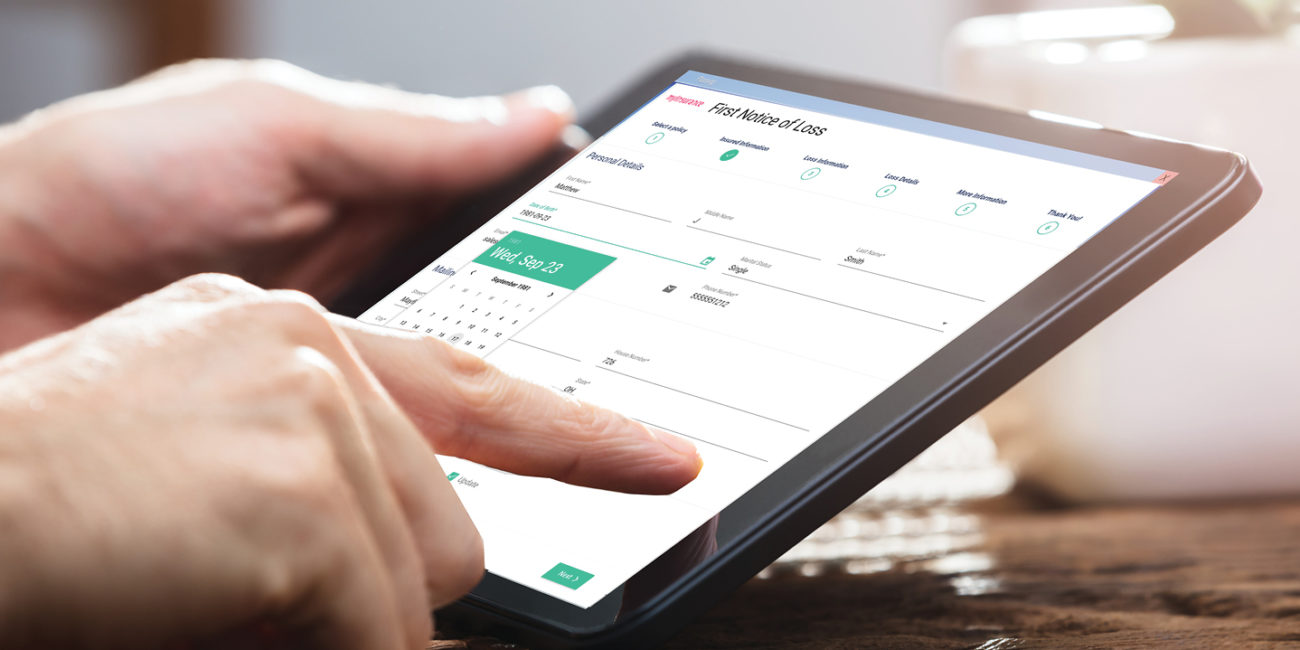SELF SERVICE IVR
Visual IVR Software
Deflect more calls with visual experience options in your existing IVR menus. Redirect low-value inquiries to inexpensive self-service experiences they prefer to costly agent calls. Build visual ivr self service apps in minutes!

A faster, more flexible way to create Visual IVR self-service
Great self service = great results
- 40k
Agents delivering digital customer service daily

- 10M+

- 50%+
Inbound calls diverted to digital self-service

Your Mobile callers want more than a “landline” experience
Lower call volumes and costs
Extend your contact center automation strategy without months-long development cycles. Quickly build, connect, and deploy great visual experiences that seamlessly integrate with your existing IVR solution.


Let customers self-serve instantly
The FICX visual IVR solution accelerates your digital CX roadmap and cuts support costs with great experiences that speed customer resolution and boost satisfaction.
Increase digital usage, even among “digital dodgers”
Build engaging visual IVR customer service apps that prequalify prospects, guide customers to the best solutions, and speed customer onboarding without the need to speak with agents.

What can I build with FICX Visual IVR software?
Divert inbound calls from IVR to digital self-service with easy visual options
Empower agents with sharable digital experiences that cut costs and AHT
Replace slow, outdated PDFs and paper processes with easy-to-use forms
Easily build and embed the digital self-service capabilities customers need
Deflect high-cost call center interactions to low-cost digital self-service
Automate your most critical multi-step customer journeys and internal processes
Anticipate and reespond to needs based on real-time actions, events, and data
Create self-service, PCI-compliant payment and billing workflows for customers
Close deals with automated quotes, pre-qualification, build your plan/car, etc.
Hear what our clients have to say
"FICX allows us to quickly address customer pain points with easy-to-use digital self-service options that cut support costs and increase customer satisfaction."

David Williams
Vice President, Automation, AT&T"FICX powers our Visual Call Center, giving customers the option to self-serve via SMS. 400,000 customers now choose self-service monthly, and the figure continues to climb."

Anca Radu
Product Manager, eCommerce, BT"FICX has enabled MOST Technologies and our clients to shorten development time by 90% for digital collaboration experiences between customers and agents."

Omry Genossar
Vice President, Products, MOST Technologies




Want to see more? No problem.
Connect with our team or create a free account with just your email.
Visual IVR Software FAQs
What is Visual IVR Software and why does it matter?
Visual IVR, or Visual Interactive Voice Response, is a technology that combines the traditional IVR (Interactive Voice Response) system with a visual interface. With Visual IVR, callers interact with a graphical interface on their mobile device or computer screen, in addition to the traditional audio prompts and touch-tone keypad inputs. With the best systems, Visual IVR experiences are delivered to customers via an SMS short link. This method requires no software download.
An ideal visual IVR experience requires no training to use. It is simple, focused on a single task, and developed to serve any customer, including those with dexterity or other challenges.
Visual IVR provides callers a more intuitive and interactive experience, as they can visually navigate menus and options instead of just listening to audio prompts. Callers can click on buttons, select options, and even input text using their mobile device or computer, completing tasks or getting the information they need faster and easier.
Visual IVR also provides businesses additional benefits, such as increased customer satisfaction, reduced call volume, and improved agent efficiency. In fact, Visual IVR is becoming so popular that hospital networks and medical offices are rapidly adopting the technology to drive improved patient engagement.
Learn more in our blog post on the fundamentals of Visual IVR.
What is the difference between Visual IVR and Conversational IVR?
Visual IVR and Conversational IVR are two types of IVR (Interactive Voice Response) systems companies use to interact with customers.
Visual IVR is an IVR system that uses visual elements such as menus, buttons, and images to guide customers through a series of options. Customers can quickly navigate menus and select options, reducing their time on hold and improving their overall experience.
Conversational IVR (Conversational Interactive Voice Response) is an IVR system that uses natural language processing (NLP) to understand and interpret the customer's spoken or typed input. Conversational IVR systems use speech recognition and AI-powered chatbots to engage customers in a conversation and guide them through a series of options. Conversational IVR provides a more human-like experience, allowing customers to interact with the system more naturally and intuitively.
Conversational IVR significantly enhances the ability to use speech to navigate IVR menu options and complete tasks. Speaking is the most natural way for humans to communicate, so the appeal of Conversational AI is clear. However, a recent study by Sitel Group shows that 70% of consumers prefer not to speak to a virtual assistant or chatbot in customer service scenarios, with nearly half citing that they don’t trust a bot’s ability to understand their needs accurately. Another report from CGS shows that 86% of people prefer live chat to bot chat for this same reason.
While natural language processing is continually improving speech recognition, relying on virtual assistants and chatbots to understand customer needs, intent, and urgency can be challenging and risky. Conversational IVR platforms often require human intervention when customer intent can’t be easily determined.
Learn more in our blog post on conversational IVR.
Do customers like Visual IVR?
Great Visual IVR experiences speed customers to the information they need and boost customer satisfaction. Here are some factors that determine customer satisfaction with Visual IVR:
- Ease of Use: Customers are more likely to like Visual IVR if it is easy to use and navigate. A well-designed visual interface and clear instructions can help customers find the information they need quickly and easily.
- Self-Service Capabilities: Customers are more likely to like Visual IVR if it offers a self-service option the user can see for the tasks that are most important to them.
- Speed and Efficiency: Customers are more likely to like Visual IVR if it provides them with the information they need quickly and efficiently, without requiring them to wait on hold or navigate through a complex IVR menu.
- Integration with Other Channels: Customers are more likely to like Visual IVR if it integrates seamlessly with other channels, such as chatbots or live agents, allowing them to easily switch between channels as needed.`
Read our post on digital customer engagement for call diversion.
How does visual IVR help wIth call deflection?
Visual IVR software can help with call deflection/diversion by providing customers with a self-service option to quickly and easily find the information they need without speaking to a call center agent.
When customers call a call center, they may have a simple inquiry or request that can be handled through self-service channels. However, if they must wait on hold or navigate through a lengthy IVR menu, they may become frustrated and opt to speak to an agent unnecessarily.
Visual IVR technology allows customers to access self-service options through a digital interface. By providing a visual menu of options, customers can quickly find the information they need and complete their tasks without assistance from a call center agent.
How can Visual IVR help a company deliver better customer service?
Visual IVR can help a company provide better customer service in several ways:
- Faster and More Efficient Service: Visual IVR provides customers with a self-service option to quickly and easily find the information they need without speaking to a call center agent. This can help reduce wait times and handle times, enabling the company to provide faster and more efficient service.
- Improved Customer Experience: By offering a self-service option, Visual IVR can help customers get the information they need more quickly and easily, leading to a better overall customer experience.
- Increased Customer Satisfaction: Visual IVR can help increase customer satisfaction by providing a convenient and efficient way for customers to access information and complete tasks. When customers can get what they need quickly and easily, they are more likely to be satisfied with their experience.
- More Effective Call Deflection: Visual IVR can help reduce the volume of calls to the call center by providing customers with a self-service option. This can help the company handle more complex issues and reduce wait times for customers who do need to speak to a call center agent.
- Better Data Collection: With data validation logic, Visual IVR can ensure that customer inputs include all the information needed for a process.
Read our blog post on how digital customer experie takes pressure off call center agents.
How many calls can I deflect with Visual IVR?
FICX works with many companies that deploy visual IVR to help divert straightforward customer queries to digital self-service experiences. With a typical success story, about 30% of calls for a specific topic or need can be deflected or diverted in the first year of deployment. This figure rises to 80-90% by the end of year two as more customers become familiar with the experience. Over time, adoption rates rise more quickly because consumers using visual IVR to interact with other businesses adopt new experiences more readily.
Depending on the size of your call volumes, it is not unheard of to save millions of dollars annually – some save tens of millions! Moreover, customer satisfaction scores rise as your support costs fall because the customers get answers more quickly and easily.
Learn the language of call deflection in our handy glossary.
What are some examples of Visual IVR use cases?
Here are some examples of self-service processes that are great candidates for deployment over visual IVR to drive self-service adoption and lower overall support costs:
- Update Info on File: This is a classic example of a task that does not require the involvement of an agent.
- Balance and Payment Info: Even if your existing audio-only IVR system has a process for addressing these questions, providing visual options via SMS link could drive higher call diversion rates and improved satisfaction.
- Make a Payment: Few audio IVRs tackle this use case well; it is challenging for many customers to complete all the necessary steps in an audio-only environment. With a visual IVR application, it is incredibly straightforward.
- Vacation Notices: Many banks encourage customers to notify them of upcoming travel plans to add additional security for credit cards and other accounts.
- Insurance First Notice of Loss: When customers make a claim, much of the requested information is at least as quickly delivered via a visual interface as over the phone with an agent. Further, many customers prefer to perform the maximum number of tasks via self-service.
- Apply Online: Many customers could quickly onboard for products and services with a visual IVR digital self-service option. While live rep interactions better serve some sales processes, others are so straightforward that a DIY approach could help boost completion rates, conversion counts, and revenue.
- Service Changes: Customers could easily adjust the level of service (e.g., monthly minutes for a cellular plan) by reviewing a visual comparison and making a selection in a visual IVR form.
Check out our blog post on top use cases by industry.
What are the key metrics for Visual IVR?
To measure the effectiveness of Visual IVR, you can track various metrics that indicate customer satisfaction and call center performance. Here are some important metrics to consider:
- Self-Service Usage Rate: This metric measures the percentage of customers who use Visual IVR to complete their tasks without needing assistance from a call center agent. A high self-service usage rate indicates that customers are finding the Visual IVR easy to use and that it is effectively handling their needs.
- Call Deflection Rate: This metric measures the percentage of calls that are deflected from the call center by Visual IVR. A high call deflection rate indicates that Visual IVR provides customers with the necessary information.
- Abandonment Rate: This metric measures the percentage of customers who abandon their call or interaction with Visual IVR before completing their task. A high abandonment rate may indicate that the Visual IVR is difficult to use.
- Customer Satisfaction (CSAT): This metric measures customer satisfaction with Visual IVR.
Tracking these metrics allows you to evaluate Visual IVR's effectiveness and identify improvement areas.
Where can I see a demo of Visual IVR?
The team at FICX would be pleased to share a demo of visual IVR technology. Just fill out this form or visit the FICX homepage.






